Navigate the Universe of ETFs
Use the Kiplinger ETF 20 to build a solid core for your portfolio. Our list also includes funds to explore satellite strategies.

Fly Me to the Moon is a love song, the Frank Sinatra version of which was actually played on the moon by Apollo 11 astronauts. But these days, it might as well be the anthem for investors in exchange-traded funds. Assets in ETFs are growing at an astronomical rate, closing in on $4 trillion in the U.S. That’s still less than the $18 trillion that sits in U.S. mutual funds. But it’s clear that investors are now choosing ETFs over mutual funds. The ETF share of total assets at investment firms has grown to nearly 16% from 8% at the start of the decade, while mutual funds have lost market share.
That’s in part because ETFs are agile. These funds, which are baskets of assets that trade like stocks, are typically index-based and, therefore, low-cost. They offer an efficient way to invest in a broad swath of the market or to zero in on a targeted area. As ETFs evolve, investors are getting smarter about how they use ETFs in their portfolios. “After a decade of market gains, ETFs now play a unique role for investors as the foundation of a portfolio and also as vehicles that enable investors to be nimble,” says Kari Droller, who oversees third-party mutual funds and ETFs at Charles Schwab.
According to a recent Schwab survey, investors are using ETFs to fortify the core of their portfolios. But they’re also using these funds to build satellite holdings that revolve around the core. These bets are more strategic: Short-term bond ETFs offer ballast in an uncertain interest rate environment; dividend-stock funds provide income and stability; a health care stock ETF can goose growth.

Sign up for Kiplinger’s Free E-Newsletters
Profit and prosper with the best of expert advice on investing, taxes, retirement, personal finance and more - straight to your e-mail.
Profit and prosper with the best of expert advice - straight to your e-mail.
We follow the same approach with the Kiplinger ETF 20, the list of our favorite ETFs. The roster is diverse. Some are core holdings, and others might satisfy specific needs, such as ballast, income or growth. Some are traditional index funds, which means they track benchmarks that weight holdings by market value (the bigger a stock’s market capitalization, the bigger its position in the index and the ETF portfolio). Others are so-called smart-beta ETFs, which typically track a designer index that is built to do better than a particular pocket of the market. And some of our ETF picks are actively managed. Not all of the Kip ETF 20 are going to be right for you, but the list can come in handy as you build, or round out, your portfolio.
The stock market has had a topsy-turvy ride over the past 12 months, but we’re pleased with the performance of our Kip ETF 20 stock funds. Two of our smart-beta ETFs beat Standard & Poor’s 500-stock index: Vanguard Dividend Appreciation and Schwab US Dividend Equity.
The traditional index ETFs did their job, too. They performed in line with their benchmark, minus expenses. Over the past 12 months, for instance, iShares Core S&P 500, with an expense ratio of 0.04%, returned 9.91%, slightly ahead of the S&P 500’s 9.89% gain.
Our fixed-income ETFs for the most part came through, too. Two of the intermediate-term core bond funds are actively managed, but only one—Pimco Active Bond (symbol BOND)—beat the Bloomberg Barclays U.S. Aggregate Bond index. SPDR DoubleLine Total Return Tactical (TOTL) trailed the Agg by 0.6 percentage point.
We’re making some changes to the roster this year. Some of the newcomers are meant to cushion your portfolio in a market downturn. One new entrant is simply a better strategy for investing in small-company stocks; another is a way to buy into some of the most innovative trends of our time. Read on for details on which ETFs are moving in, and which ones are moving out to make room. Also, we share our tips for trading ETFs below. Returns and data are through July 12.
Switching gears
What’s in: iShares Edge MSCI Min Vol USA ETF (USMV), an ETF that holds up well in rocky markets (Min Vol stands for minimum volatility). The ETF tilts toward stocks of steadier large and midsize U.S. companies. “By reducing overall volatility, the fund delivers market-like returns with lower risk,” says Holly Framsted, head of smart-beta ETFs for BlackRock’s iShares. Over the past five years, iShares Edge MSCI Min Vol was 22% less jumpy than the S&P 500, and it beat the benchmark by an average of 2.2 percentage points per year with a 13.4% annualized return.
Low-volatility funds tend to lag the market in good times but lose less in tough times. In 2017, when the S&P 500 gained 21.8%, iShares Edge MSCI Min Vol trailed, but only by a bit, with an 18.9% return. But in late 2018, when the broad market index sank 19.4%, iShares Edge MSCI Min Vol lost only 12.6%. The ETF rebalances twice a year to stay in line with its index. Recently, the fund’s top holdings included Newmont Goldcorp, Waste Management and Visa.
What’s out: iShares Edge MSCI USA Momentum (MTUM). This ETF emphasizes companies with rapidly rising share prices. Specifically, it homes in on stocks that have notched the biggest price gains over the past six and 12 months. That worked fine in the thick of a bull market. We added Edge MSCI USA Momentum to the Kip ETF 20 in mid 2018, and since then, the ETF has gained 12.8%, which beats the S&P 500.
But momentum funds can struggle in volatile markets. As prices flip-flop quickly, there are fewer meaningful trends to follow. In the roughly three-month stretch between late September and December 24 of last year, Edge USA Momentum slid 21.1% in price, compared with a 19.4% loss in the S&P 500. “Momentum tends to work best in the belly of an economic cycle, when there are established trends in the market,” says Framsted. “It does less well when there is greater uncertainty.”
Smoother ride
What’s in: Invesco S&P SmallCap Low Volatility ETF (XSLV). Small-company stocks tend to produce bumpy returns. Over the past decade, the Russell 2000 small-company stock index has been 37% more volatile than the S&P 500. Invesco S&P SmallCap Low Volatility is designed to smooth out the ride. So far, so good: Since this ETF launched in early 2013, it has outpaced two small-company stock benchmarks—the Russell 2000 and the S&P Small Cap 600—on an annualized basis, with less volatility.
There are cheaper options, but none as steady. Over the past five years, the ETF has outperformed its peers—other low-volatility and traditional small-company stock ETFs—with less volatility in both up and down markets. We view this ETF as a core small-company stock holding.
The stock-picking process is simple. The ETF tracks a subset of the S&P Small Cap 600 small-company stock index that comprises 120 of the least volatile stocks, measured over the past 250 trading days. Stocks with the lowest volatility scores have a heftier rank in the portfolio regardless of market value. The ETF is nimbler than some of its peers because it recalculates the portfolio’s constituents and rankings every three months, instead of twice a year.
But it’s worth noting that exposures to certain sectors in the ETF can get lopsided; the fund doesn’t employ any constraints to stay in line with its parent index, the S&P Small Cap 600. These days, the ETF has almost 70% of assets invested in financial services and real estate stocks combined, more than twice the exposure of the S&P Small Cap 600. The high concentration in dividend-rich sectors gives the fund a yield of 3.37%. Two real estate investment trusts, Apollo Commercial Real Estate Finance and Redwood Trust, and a commercial mortgage lender, Granite Point Mortgage Trust, are among the ETF’s top holdings.
What’s out: Vanguard Russell 2000 Value ETF (VTVW). It’s been a rough couple of years for bargain-priced, small-company stocks. In 2017, value shares in the Russell 2000 index of small-company stocks lagged their growth-oriented counterparts, which gained a whopping 22.2%, by 14.4 percentage points. Then, in 2018, small-company value stocks declined 12.9%—more than the 9.3% loss in shares of small fast-growing firms. Value investing (buying stocks that are underpriced relative to sales, earnings or other measures) will come back eventually, as market underdogs tend to do, but we’re ousting this ETF in favor of one that offers a smoother ride.
Path to the future
What’s in: Ark Innovation ETF (ARKK) offers investors an efficient way to get in on some of the biggest groundbreaking advancements changing lives today. The actively managed ETF invests in stocks set to benefit from one of five future trends: DNA sequencing and the gene therapies that are born from it; robotics; energy storage (think electric cars); artificial intelligence; and blockchain technology (the algorithms behind digital currencies). Electric automaker Tesla is the ETF’s biggest holding, followed by 3-D printer firm Stratasys and Invitae, a gene diagnostic and research company.
This is a shoot-the-moon investment, not a core holding. The ETF holds 37 stocks, which represent what ETF manager Catherine Wood of Ark Invest calls the money-management firm’s “best ideas.” Ark Invest also steers four additional active ETFs that target a single “disruptive innovation” theme, including Ark Web x.0 ETF and Ark Genomic Revolution. Wood has a team of 20-odd analysts and traders working on those and on Ark Innovation ETF, which spans all of the themes. “We believe each stock in the portfolio will deliver a minimum 15% annualized return over the next five years,” says Wood, though she concedes they may not be right about every single holding.
Over the past three years, Ark Innovation has returned an annualized 35.3%, which pummels the S&P 500 by more than twofold. But buckle up, because the ride has been extremely uneven. Over that period, the ETF was more than twice as volatile as the S&P 500.
Wood uses the turbulence to the fund’s advantage. Consider Tesla, whose stock price bounces around a lot. In August 2018, shares hit $380. The stock dropped to $250 months later and then rocketed to $377 in early December 2018. In June 2019, shares were down to $223. “Innovation is controversial, so we lie in wait for controversy in order to build our positions,” says Wood. “We buy shares at the lows and sell at the highs.” The trimming and padding of holdings adds to turnover, which at 89% is typical for a fund that focuses on tech stocks. But Wood is generally a buy-and-hold investor. Based on changes in holdings that shift in and out of the portfolio entirely, she says, the fund’s turnover is closer to 15%.
What’s out: Vanguard FTSE All-World ex-US Small Cap ETF (VSS). Small foreign firms are more connected to their local markets than their larger counterparts and thus offer better exposure to a home country’s fast-growing domestic economy. But in recent years, Vanguard FTSE All-World ex-US Small Cap ETF has been high on risk and low on returns. International stock markets have lagged U.S. stocks for five of the past seven years, hampered recently by a stronger dollar, higher U.S. interest rates and trade-tariff tensions. For aggressive investors, we think Ark Innovation holds more promise. Investors who still want to play foreign markets should explore Vanguard Total International Stock (VXUS), which has been a member of the Kip ETF 20 since the list was inaugurated four years ago. The fund offers comprehensive exposure to stocks in foreign companies of all sizes in developed and emerging markets.
Socially conscious
What’s in: iShares MSCI USA ESG Select ETF (SUSA), which focuses on environmental, social and corporate governance characteristics to pick stocks. If you think ESG investing involves some tree-hugging, you’re right. But it is more than that. The best firms based on ESG criteria are mindful of their environmental impact but also treat employees, customers and their community well and have a diverse pool of ethical managers who are aligned with shareholder interests. All of these characteristics (and more) add up to well-run firms that perform better over time, the thinking goes. In other words, ESG tenets make
good business sense and thus good investment sense.
ESG ratings can help identify a firm’s problems before they come to light and snarl the stock. MSCI, a data provider that rates firms on ESG factors, flagged data and privacy issues at Equifax and downgraded the company’s ESG score to the lowest possible rating a full year before hackers breached the credit-reporting agency’s database. (MSCI’s ESG ratings resemble bond credit ratings and range from the best, triple-A, to the worst, triple-C.) Analyzing companies through an ESG lens can “catch problems in advance,” says Todd Rosenbluth, a CFRA mutual fund and ETF analyst.
Investors are clamoring for ESG-focused funds. Assets in this category more than doubled in 2018, says Rosenbluth. That’s more than the 24% asset growth overall in smart-beta ETFs. Not surprisingly, dozens of promising, socially conscious ETFs have launched over the past two years. But we’re wary of recommending funds with such short track records. However, iShares MSCI USA ESG Select has been around since 2005 and boasts one of the longest track records in socially responsible investing.
What’s more, its index tracks the best of the MSCI ESG-rated companies. After eliminating companies that make tobacco products, weapons, alcohol or nuclear power, or are involved with gambling, the index targets firms with the highest MSCI ESG ratings. According to BlackRock, 73% of the holdings in the index and the ETF have a triple-A or double-A MSCI ESG rating, the two highest ratings. The 100 stocks in the ETF are ranked by their ESG rating (the better the rating, the bigger the firm’s representation in the fund), and the portfolio is rebalanced four times a year. Microsoft, Ecolab and Apple are top holdings. Over the past five years, iShares MSCI USA ESG Select has returned 10.2% annualized, shy of the S&P 500’s annual average gain of 11.2%.
What’s out: Invesco Dynamic Large Cap Value (PWV). Though value investing has been out of favor for much of the bull market, we have no doubt it will come back. But this ETF has an above-average, 0.56% expense ratio, an above-average turnover ratio of 128% (which implies a typical holding period of nine months) and, as Morningstar analyst Alex Bryan notes, “uneven performance” relative to its value-oriented peers. With market and economic uncertainty at a high, we prefer to round out our roster with a focus on high-quality ESG standouts.
Smart ways to invest in ETFs
Exchange-traded funds are quirky. Like stocks, they trade throughout the day, but similar to mutual funds, they hold baskets of assets. In the early days, ETFs were mostly straightforward index funds, but over the years they have grown more complicated. Some ETFs are actively managed; others follow specially designed proprietary indexes. Be smart about how you invest in ETFs, and keep these tips in mind before you buy one.
Buy commission-free. Because ETFs trade like stocks, ostensibly you pay a commission when you buy and sell shares. But gobs of ETFs trade for no charge at major online brokers. Fidelity and Schwab each offer more than 500 ETFs with no sales charge. TD Ameritrade has more than 500, and Vanguard offers a whopping 1,800 funds. Commission-free trading makes dollar-cost averaging (investing small dollar amounts at regular intervals) a no-brainer. That’s a boon to investors who are starting out or who may not be sure about a particular strategy. “A mutual fund minimum of $3,000 may be out of reach for an investor just getting started,” says Rich Powers, head of ETF products at Vanguard. “But the minimum amount for an ETF is the share price. So if the net asset value of an international stock ETF is $100, all investors need to come up with is $100 to globally diversify their portfolio with one trade.”
Use limit orders. When you buy shares in a mutual fund, your trade is executed at the end of the day, at the fund’s prevailing net asset value, or share price. ETFs work differently. Like stocks, ETFs have a bid price (the highest price a buyer will pay) and an ask price (the lowest price a seller will accept). Many popular ETFs have narrow bid-ask spreads. But less-frequently traded ETFs may sport wide spreads, conferring some uncertainty about the price you’ll end up getting. A limit order allows you to specify the price at which you are willing to buy or sell shares. If the spread is wide, set the limit order at a price that falls between the bid and the ask.
Consider expense ratios carefully. Three zero-fee ETFs launched this year: SoFi Select 500 ETF, SoFi Next 500 and Salt Low truBeta US Market ETF. But don’t let the 0% expense ratio draw you in too quickly. Do your homework. These zero fees are not set in stone. For instance, SoFi says its zero fees will stay in place for at least the first year but doesn’t guarantee they will always be zero. In addition, many firms view no-fee products as a way to lure investors into pricier offerings, such as a money market fund. Remember, too, that you may have to pay a commission to buy shares in an ETF.
Know exactly what you’re buying. As we’ve said, ETFs have become complicated as the market for them has grown. Consider one of the free ETFs we mentioned earlier, the SoFi Select 500 ETF. Although it has “500” in its name, the ETF is not tied to Standard & Poor’s 500-stock index. Rather, it tracks a proprietary index of large U.S. companies that are ranked by a combination of measures, including sales growth for the past 12 months and earnings-growth expectations for the next 12 months. “It has more of a growth tilt, and it won’t perform like an S&P 500-based product because it’s not based on the S&P 500,” says Todd Rosenbluth, who analyzes mutual funds and ETFs for investment research firm CFRA.
Get Kiplinger Today newsletter — free
Profit and prosper with the best of Kiplinger's advice on investing, taxes, retirement, personal finance and much more. Delivered daily. Enter your email in the box and click Sign Me Up.

Nellie joined Kiplinger in August 2011 after a seven-year stint in Hong Kong. There, she worked for the Wall Street Journal Asia, where as lifestyle editor, she launched and edited Scene Asia, an online guide to food, wine, entertainment and the arts in Asia. Prior to that, she was an editor at Weekend Journal, the Friday lifestyle section of the Wall Street Journal Asia. Kiplinger isn't Nellie's first foray into personal finance: She has also worked at SmartMoney (rising from fact-checker to senior writer), and she was a senior editor at Money.
-
 RMD Deadline April 1: Five Tax Strategies to Manage Your 2025 Income
RMD Deadline April 1: Five Tax Strategies to Manage Your 2025 IncomeTaxable Income The April 1, 2025, deadline for required minimum distributions (RMDs) is fast approaching for retirees who turned 73 in 2024.
By Kelley R. Taylor Published
-
 Rising AI Demand Stokes Undersea Investments
Rising AI Demand Stokes Undersea InvestmentsThe Kiplinger Letter As demand soars for AI, there’s a need to transport huge amounts of data across oceans. Tech giants have big plans for new submarine cables, including the longest ever.
By John Miley Published
-
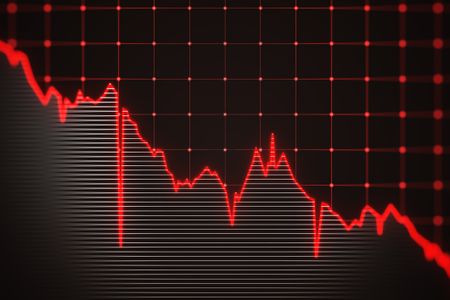 Stock Market Today: Dow Sinks 715 Points as Inflation Unrest Grows
Stock Market Today: Dow Sinks 715 Points as Inflation Unrest GrowsInflation worries are showing up in both hard and soft data.
By Karee Venema Published
-
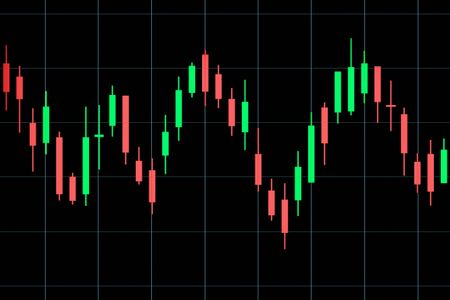 Stock Market Today: It's Going to Stay Choppy for Stocks
Stock Market Today: It's Going to Stay Choppy for StocksAuto-focus can show us a lot about uncertainty on the ground and in the stock market.
By David Dittman Published
-
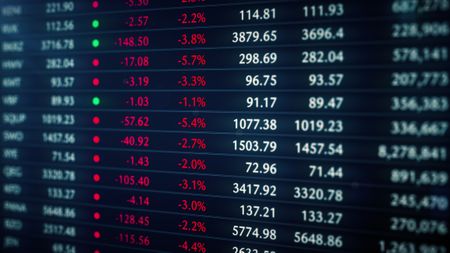 Stock Market Today: Auto Tariffs Send Stocks Lower
Stock Market Today: Auto Tariffs Send Stocks LowerThe main indexes snapped their win streaks after the White House confirmed President Trump will talk about auto tariffs after the close.
By Karee Venema Published
-
 Stock Market Today: Stocks Seesaw After Big Market Rally
Stock Market Today: Stocks Seesaw After Big Market RallyThe latest consumer confidence data showed sentiment remains low.
By Karee Venema Published
-
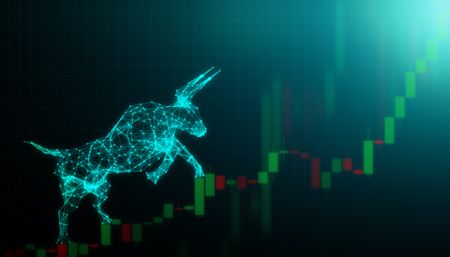 Stock Market Today: Markets Celebrate Trump's Tariff Détente
Stock Market Today: Markets Celebrate Trump's Tariff DétenteConsumer discretionary stocks led 10 of the 11 S&P 500 sector groups well into the green.
By David Dittman Published
-
 Stock Market Today: Stocks Swing Higher After Early Slump
Stock Market Today: Stocks Swing Higher After Early SlumpNegative earnings reactions for Nike, FedEx and Micron kept pressure on the main indexes, though.
By Karee Venema Published
-
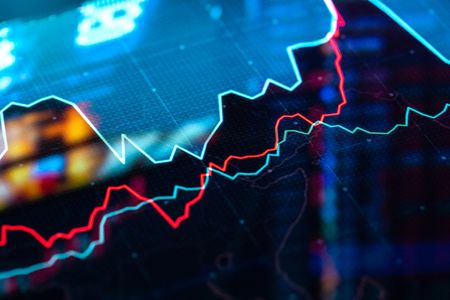 Stock Market Today: Stocks Struggle After Big Fed Gains
Stock Market Today: Stocks Struggle After Big Fed GainsAn unexpected rise in existing home sales couldn't save stocks on Thursday.
By Karee Venema Published
-
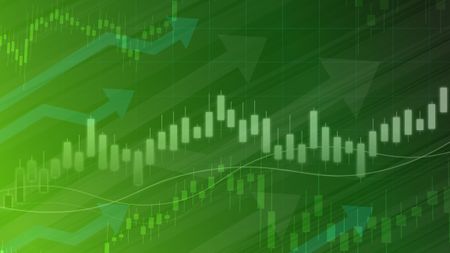 Stock Market Today: Stocks Enjoy a Fed Day Relief Rally
Stock Market Today: Stocks Enjoy a Fed Day Relief RallyThe question now is whether Jerome Powell and other policymakers can get the balance right given all the new noise.
By David Dittman Published